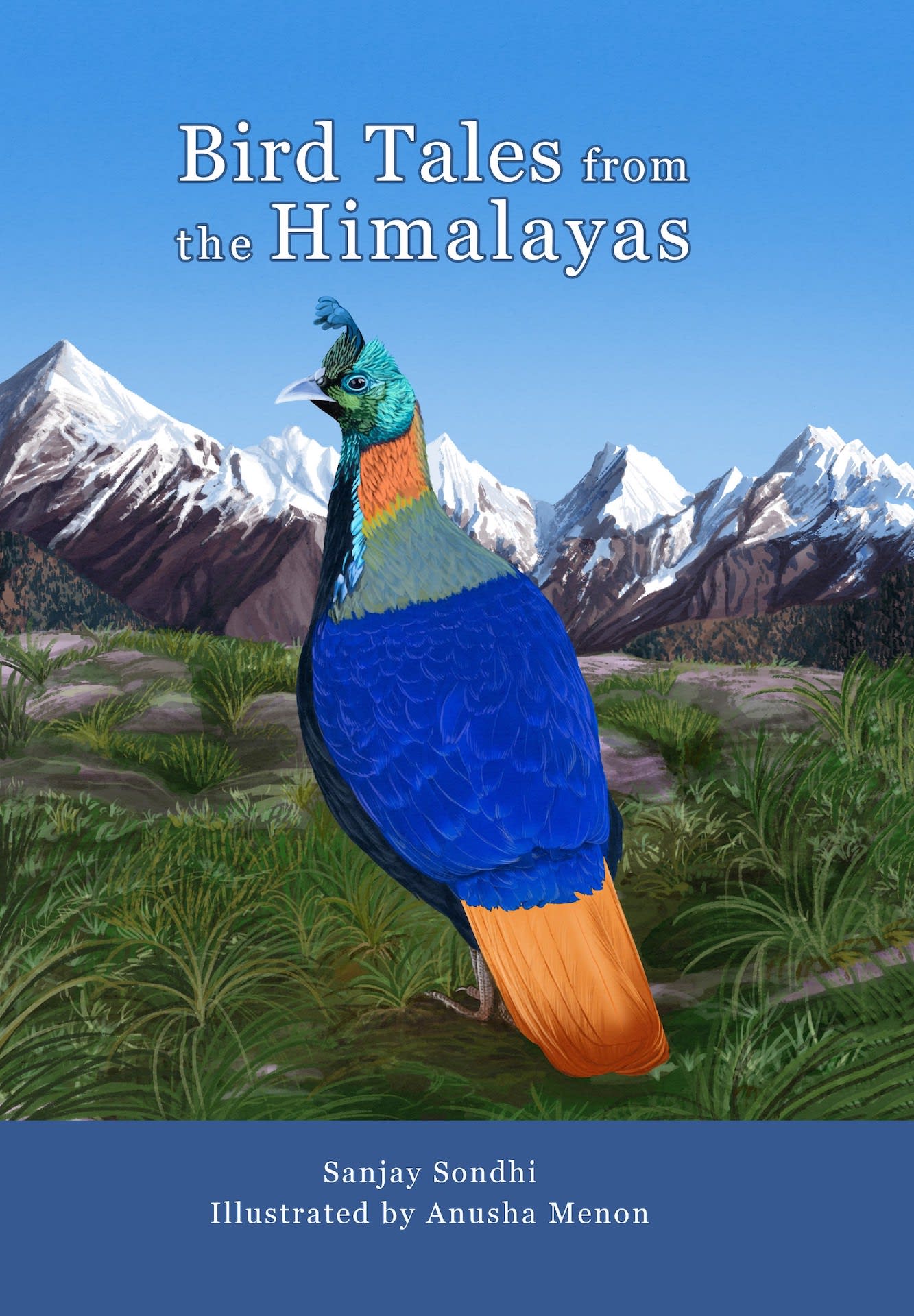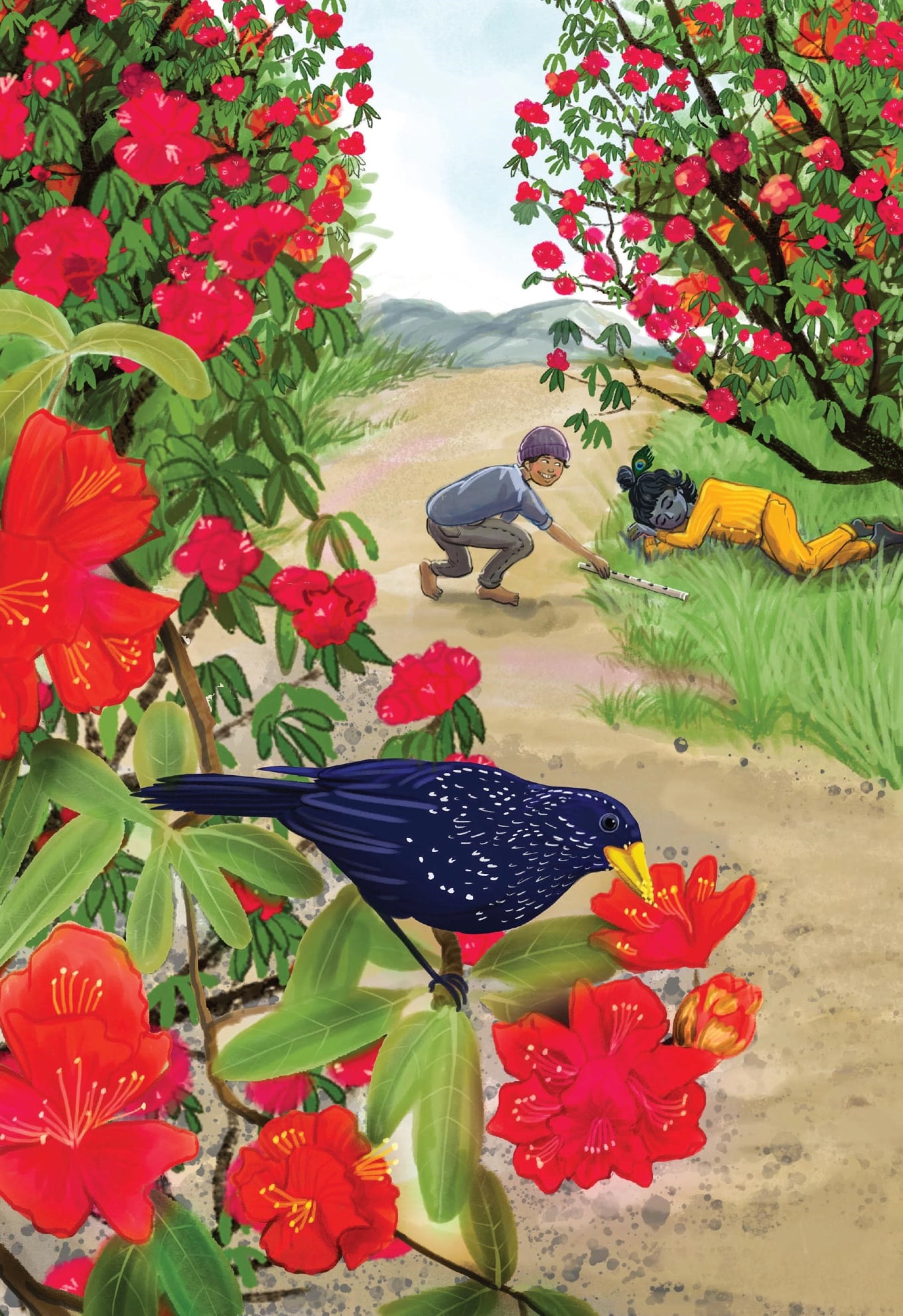 Listen to this article
•
15:34 min
Listen to this article
•
15:34 min
My first encounter with the blue whistling thrush was an unforgettable one. It was May 1987. I was tucked into my warm bed in the quaint hill station of Dalhousie in Himachal Pradesh. Those were early days into birdwatching; I was a ‘tyro twitcher’! Snuggled under the blankets, I could hear melodious whistles outside the house as early as 6 am. “A boy going to school, whistling on the way,” I mused and forgot about it. When I heard the same sound the following morning and the next, my dulled early- morning brain began to function. “How on earth could a boy be going to school at 6 am?” I asked myself. Rousing myself from bed, I ventured outdoors. Lo and behold, singing away on the table in our garden shed was a blue-black bird with a yellow beak. The blue whistling thrush is a Himalayan resident and altitudinal migrant, and its cousin, the Malabar whistling thrush Myophonus horsfieldii lives in the Western Ghats. Both thrushes have a human-like melodious song, giving them the moniker, the whistling schoolboy.
The blue whistling thrush is widespread across the Himalayas. It breeds in the summer months, typically between 1,200 and 3,600 m, but descends to the foothills in the winter. In Dehradun, it arrives in our housing society in early October, like clockwork, and is the first bird to call early in the morning. The blue whistling thrush has a hopping walk and is an omnivore feeding on fruits and berries, flower nectar as well as insects, grubs, snails, earthworms and other small vertebrates. Often, when the bird alights on the ground, it will slowly spread and fan its tail. It prefers streams in well-wooded areas and ravines but is also seen on forest tracks and in gardens with sufficient foliage. When the Rhododendron flowers in spring, the Blue Whistling Thrush, like many other birds, loves to feed on its nectar. Around this time, you’ll find its forehead dotted with Rhododendron pollen!
It is locally called the kastura. Legend has it that Lord Krishna was walking along a forest trail in the Himalayas. Tired, he lay down on the path. While he was asleep, a young lad walked by, saw Lord Krishna’s flute and stole it. As the boy walked on, he began to practise playing the flute. He had only just learnt to play it in bits, when Lord Krishna woke up. He was enraged to find his flute missing and put a curse on the thief, turning him into a bird, the whistling thrush. When the Blue Whistling Thrush sings, it does so in fits and starts, just like someone who has not quite learnt to play the flute. Further, the white spots on the Blue Whistling Thrush are said to be ‘butter marks’, as Lord Krishna was very fond of butter.
Excerpted with permission from Bird Tales from the Himalayas by Sanjay Sondhi. Published by Titli Trust.





